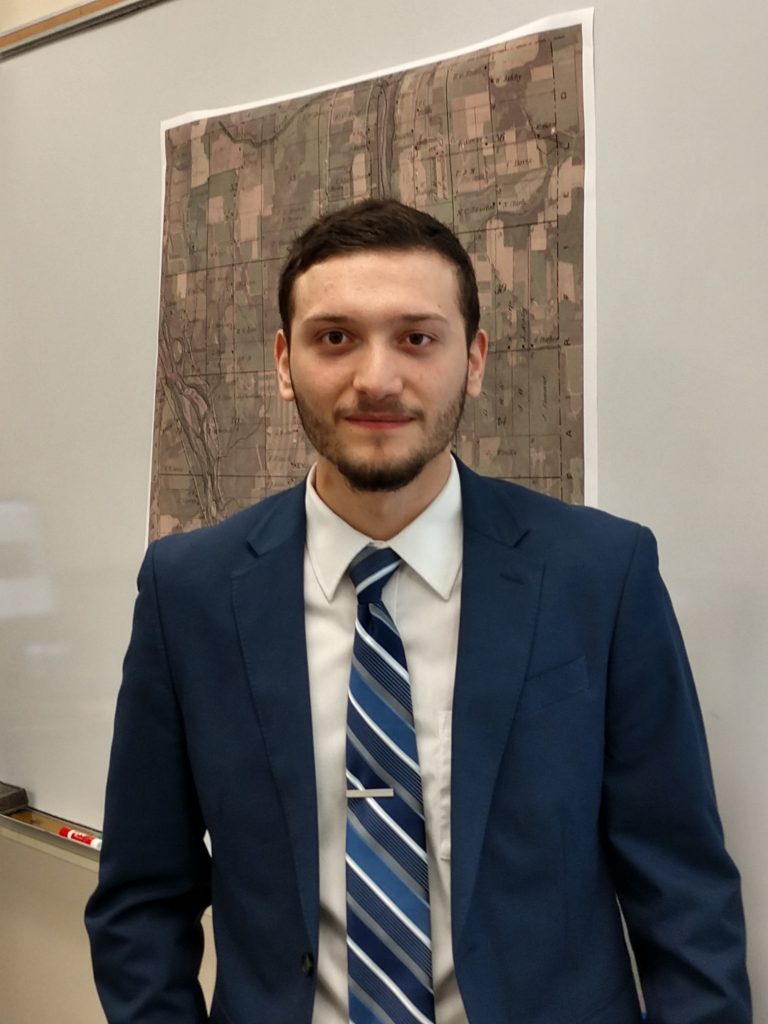What is Maysville? Thanks to UMPI student Evan Zarkadas and mentor Kim Sebold’s University Day presentation, we now know that Maysville was a town across from Presque Isle. Maysville was first settled in 1816 and was annexed into Presque Isle in 1883. Through research, Zarkadas learned about the history of the pioneers and infrastructure of Maysville. “You travel through Maysville every day,” Zarkadas said.
Zarkadas was able to trace a map from 1877 into where Maysville would presently be. He estimates that everything from the bridge past the Aroostook Centre Mall is Maysville. “The story of Mayville and for the rest of Aroostook County begins with land,” Zarkadas said. Most of the pioneers came because of land. The price of land in the early 1800s was estimated to be 50 cents an acre. Maysville went through agricultural booms after both the Aroostook War in 1839 and the Civil War in 1865.
The first road was established during the Aroostook War. The settlers wanted to avoid the New Brunswick men. “If you hate somebody you build a whole road out of it,” Zarkadas said. The two most important infrastructures of Maysville were the bridge and the Grange. Citizens of Maysville who wanted to become part of Presque Isle would say, “If we lose the bridge, what’s happening with our town?” The Grange was a place where farmers would go to form associations. “It was like a city hall of the time,” Zarkadas said. “The Grange started as a school, then it became a city hall, then it got burned about seven times and rebuilt.” The Grange is now the Maysville museum, to which Zarkadas’ presentation, pictures, maps and 200-page report will be donated.
Zarkadas’ effort speaks for itself. “It took two years, first year was going through census records and going through paperwork about each family and names.” He used newspapers from the time and public records as other sources. Sebold said that Evan had to decipher old handwriting to be used for charts. “It takes discipline, willpower, and extreme interest,” Sebold said. Sebold also said that Zarkadas earned a certificate for the geographic information system. That helped him translate the old Maysville maps. “The thing about Evan is, you tell a couple things, point him in the right direction and he just goes.” Sebold said.
“It takes discipline, willpower, and extreme interest,” Sebold said. Sometimes that’s what it takes to prompt the interest and research to find out more about where you come from and why it is important. “Local history is not appreciated much. More people read about the big wars and countries. By looking at one part of Northern Maine that no one will ever look for, you learn a lot about people and culture,” Zarkadas said. Maysville maybe gone, but its history is now preserved.


